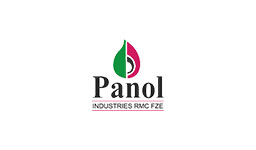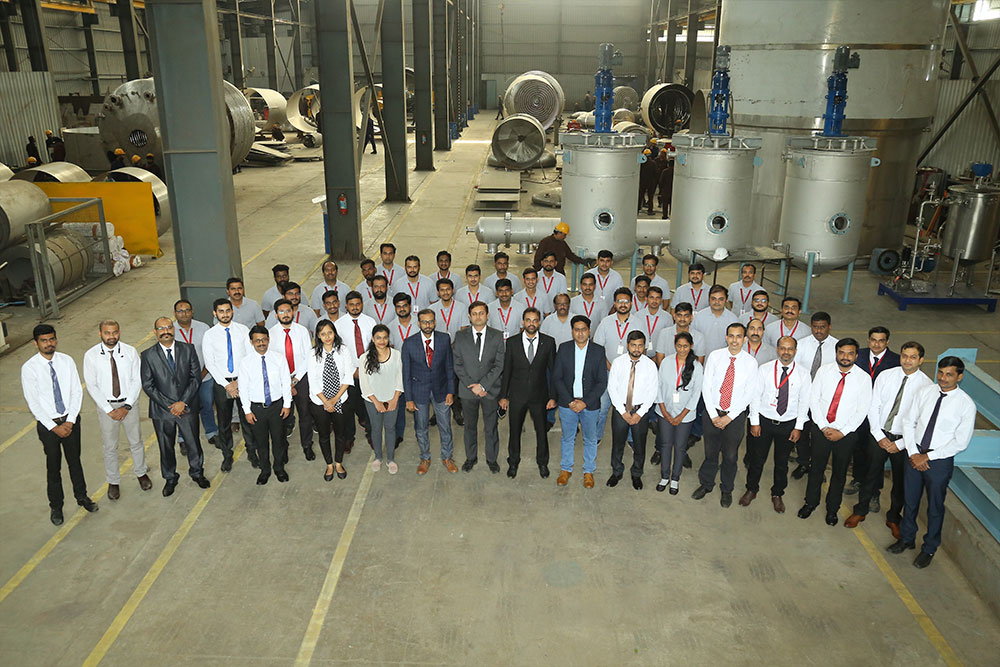Menu
Crystallization

Crystallization is one of the important chemical solid-liquid separation techniques. It is the process for the formation of solid crystals from a homogenous single-phase solution in which mass transfer of a solute from the liquid solution generates a pure solid crystalline phase. Crystallization is based on the principles of solubility. The solutes tend to be more soluble in hot liquid solvents than they are in cold liquids” If a saturated hot solution is allowed to cool, the solute is no longer soluble in the solvent and forms crystals of pure compound. Impurities are excluded from the growing crystals and the pure solid crystals can be separated from the dissolved impurities by filtration.
In crystallization where the particle size and purity must be controlled, mixing plays a key role by balancing circulation with shear to achieve sufficient micromixing and mesomixing for the reaction but avoiding over mixing to achieve growth without shedding and/or crystal fracture.Interaction between mixing and crystallization is very important as it can affect every aspect of a crystallization operation, including nucleation, growth, and maintenance of a crystal slurry”
Crystallization from solution is a 3-step process
Supersaturation
The formation of supersaturated solution
Crystal growth
The growth of the nuclei to larger size; under specific heat transfer conditions.
Nucleation
The formation of crystal nuclei.
Supersaturation – formation of supersaturated solution
Nucleation – formation of the crystal nuclei
Crystal growth – growth of the nuclei to larger size; under specific heat transfer conditions
Here the key factor is to control low supersaturation and sufficient mixing for the fast reaction while avoiding shear damage to the crystals.
Nucleation is mixing dependent. Crystal-Crystal impact, a function of both the local micromixing environment and the overall macromixing circulation and Crystal-impeller and crystal-wall impact, a function of the impeller speed, shape of blade and rnaterial of construction plays an important role.
Crystallization has beefi practiced longer than any other form of crystallization in both atmospheric tanks, which are either static or agitated, as well as in vacuum or pressure vessels. Batch crystallizer is a jacketed closed tank with top-mounted agitator and feed connections.ACME provides a crystallizer with various impeller and baffle configuration depending upon the requirement of process. The various impeller combinations are capable of providing sufficient blending for the reaction while providing the necessary low shear environment for the crystal growth as required by process. Provisions are included so that the vessel may be heated with steam addition to the shell or cooling solution circulated through the jacket so as to control the temperature.

MOC: SS304, SS3l6, SS316L, as per requirement

The most critical factor in this process is to maintain a balance between low supersaturation and proper mixing for the fast reaction, while avoiding shear damage to the crystals.
Nucleation is a function of the mixing technique, and the following impacts play an important role
- Crystal-Crystal impact – a function of both, the local micro-mixing environment and the overall macromixing circulation
- Crystal-impeller impact – a function of the impeller speed, shape of the blade and material of construction
- Crystal-wall impact – a function of eddy turbulence, particle velocity & shape, and crystallizer design.
Crystallization has been practiced longer than any other form of crystallization in both atmospheric tanks, which are either static or agitated, as well as in vacuum or pressure vessels. Batch crystallizer is a jacketed closed tank with top-mounted agitator and feed connections.
In ACME manufactured crystallizers, provisions are included so that the vessel may be heated with steam addition to the shell or cooling solution circulated through the jacket so as to control the temperature.
FEATURES
- Process based design and selection of impeller
- High efficiency
- Stable performance
- Less maintenance
- High Durability
- Corrosion resistant
- Surface Finish as per requiremenl
INDUSTRIES
- Fine chemicals
- Pharmaceuticals
- Agrochemicals
- Food
Our Clients
They Believe In Us



























